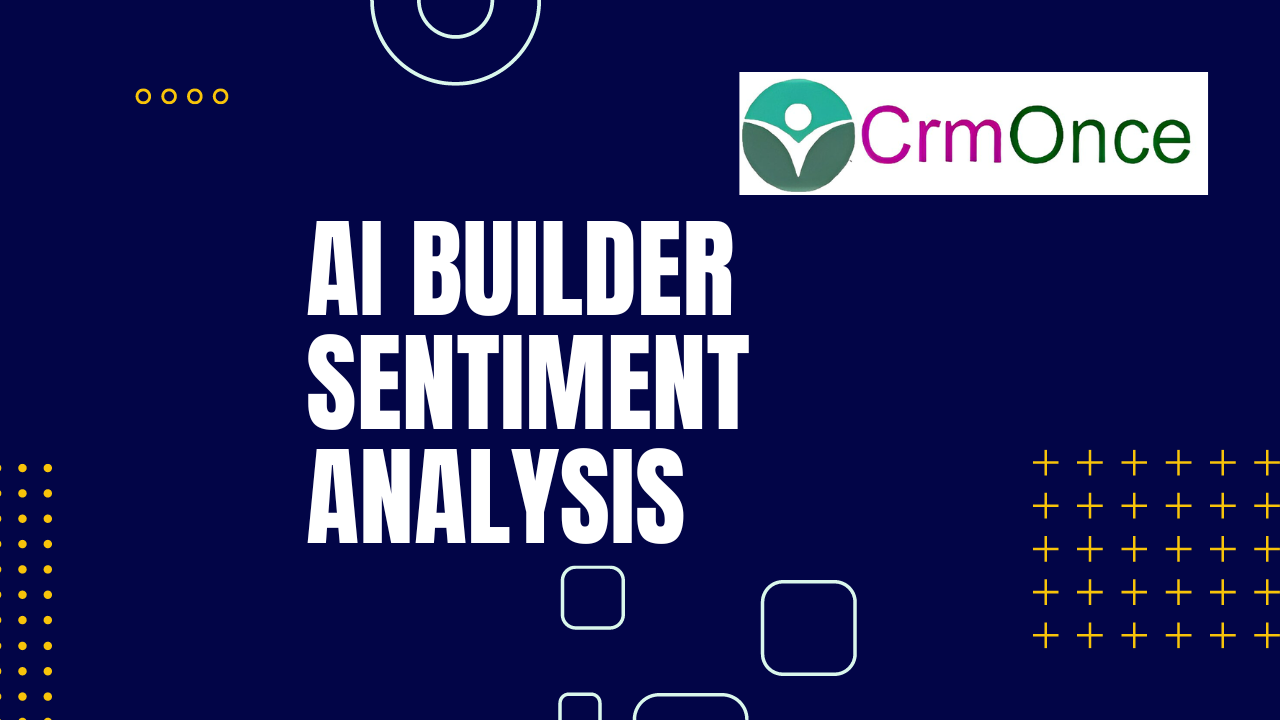AI Builder Sentiment:
In today’s digital age, understanding customer sentiments is a crucial task. Sentiment analysis, a powerful AI-driven technique that helps you build models and understand the sentiments with the help of the Low code no code(LCNC) model, empowers organizations to gauge the emotions behind textual data, such as customer feedback, social media posts, and online reviews. In this article, we explore the potential of AI Builder, a cutting-edge AI technology from Power Apps, to perform sentiment analysis and extract valuable insights from text data.
Overview of Sentiment Analysis
Sentiment analysis, also known as opinion mining, has witnessed immense growth due to the explosion of online data, mainly in recent times. We have many data analysts and data scientists evolving around, and it is used for the improvement of the organization. It involves using natural language processing (NLP) and machine learning algorithms to identify a piece of text’s emotional tone and attitude, whether it is positive, negative, or neutral. Businesses now recognize the significance of sentiment analysis in enhancing decision-making processes, customer satisfaction, and brand reputation.
AI Builder for Sentiment Analysis
AI Builder, an innovative tool within Power Apps and Power Automate, empowers users to create AI models without extensive coding expertise. With AI Builder, you would not require much knowledge of Artificial intelligence and Machine learning to train the models. Among its array of pre-built AI models, the “Sentiment Analysis” model stands out as a game-changer for sentiment evaluation. By harnessing machine learning capabilities, AI Builder can rapidly assess sentiment and provide valuable insights from text input.
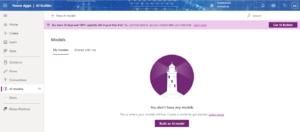
Clickon->New AI Model
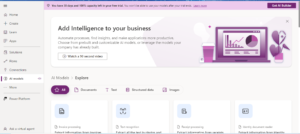
Training the Sentiment Analysis Model
To leverage AI Builder’s sentiment analysis capabilities, the model requires training. Users feed the model with labeled data, including positive, negative, and neutral examples, allowing it to learn and recognize different sentiment patterns. This data can be easily provided within the AI Builder interface, making the training process accessible to users of varying technical backgrounds. You would have to select the appropriate model that you need and then train that based on your requirement with all types of scenarios like positive, negative, etc, and make the model ready.
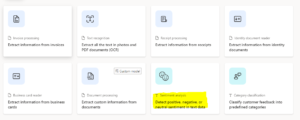
Tapping into the Sentiment Analysis Potential
Once the sentiment analysis model is trained, it can be integrated into Power Apps effortlessly. Users can input text data from various sources, such as customer reviews or social media comments, and trigger the sentiment analysis function. The AI model then processes the text and returns sentiment labels, empowering businesses to understand customer feelings at scale.
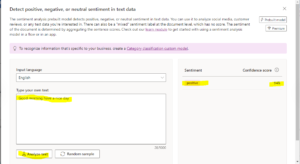
Enhancing Customer Experience
Sentiment analysis with AI Builder has far-reaching implications for customer experience. By analyzing customer feedback in real time, businesses can promptly address concerns, capitalize on positive sentiments, and tailor their offerings to meet customer expectations. This proactive approach boosts customer satisfaction and loyalty, driving long-term business growth. You would be able to feed in all the data that were received as the customer experience in the PowerApps and you can use that for the business training. You can train your model based on the inputs that you receive and use that for your customer satisfaction improvement.
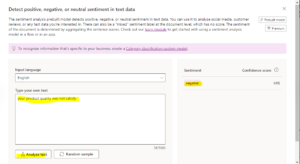
Empowering Social Media Marketing
Social media plays a significant role in shaping brand perception. AI Builder’s sentiment analysis capability equips social media managers with a powerful tool to monitor brand sentiment on various platforms. Real-time insights allow them to respond promptly to customers, manage brand reputation, and devise effective social media marketing strategies.
Navigating Brand Sentiment in Crisis
During a crisis, businesses need to monitor public sentiment carefully. AI Builder’s sentiment analysis can act as a crisis management tool, helping organizations to record the reactions of the public and assess the impact of their responses. This will help in the crisis discussion. This data-driven approach enables agile decision-making in high-pressure situations. Consider in the same scenario that the tomato price has raised, and if you start training in based on the tomato price, then you would be able to predict if the sale of the product, which is tomato in this case, is in crisis or not.
Connecting your OpenAI sentiment to the PowerApps
During the times when you connect with your OpenAI sentiments with your PowerApps by providing the inputs of the OpenAI and understand that the answers that it provides are positive or negative and add sentiments to the OpenAI sentiments that are available. It also acts as a way that you would able to analyze the emoticons, kidding in regular sentences. You will have to train the model based on those messages, and it gives you back those messages.
Sentiment Analysis in Market Research
Market research relies heavily on customer feedback and opinions. With AI Builder’s sentiment analysis, researchers can quickly analyze survey responses, focus group feedback, and product reviews. The resulting insights offer a deeper understanding of market trends, enabling data-driven product development and marketing strategies.
Conclusion
Sentiment analysis with AI Builder presents an exciting opportunity for businesses to harness the power of AI and NLP to understand customer emotions, monitor brand reputation, and drive informed decision-making. By leveraging the capabilities of AI Builder’s Sentiment Analysis model, organizations can gain a competitive edge in a data-driven world, enhance customer experiences, and build a stronger and more resilient brand presence.
Incorporating AI-driven sentiment analysis into Power Apps marks a significant leap forward in unlocking valuable insights from textual data. As businesses increasingly embrace AI technologies, sentiment analysis stands as a powerful tool, propelling them toward success in the age of digital transformation.

